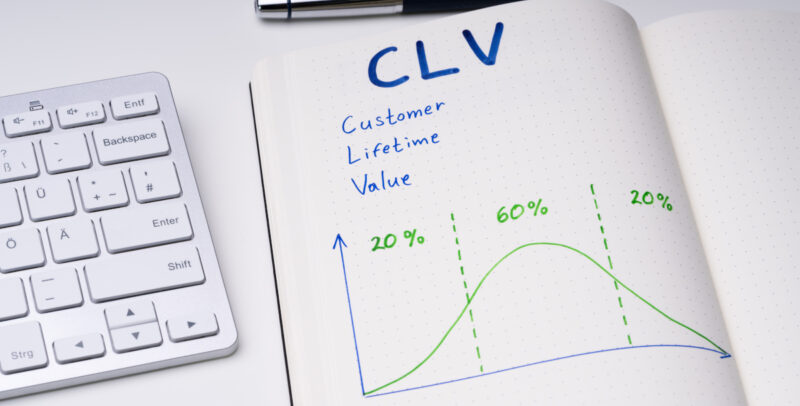Are you looking for a solution tailored to your business needs?
Parla con noiFocus on

Customer Lifetime Value: why it is important for your company
There is a marketing principle that everyone knows: it is much easier and cheaper to generate revenue from existing customers than to acquire new ones. On the other hand, many ignore the fact that regular customers differ according to Customer Lifetime Value.
Customer Lifetime Value is the value of a customer during its life cycle. This is a forecast, often for a period of 12 or 24 months, that indicates how much a customer will spend during the relationship with a company.
Although little-known, it is a very important index because it reveals how valuable a customer is. In fact, the indicator can be used to optimise a series of marketing activities and to focus on objectives that lead to greater profitability.
How is CLV calculated?
There are different formulas used to calculate CLV, more or less complex. An easy way to do this is to multiply the customer’s average annual profit by the average duration of loyalty, minus acquisition costs.
Understanding the value of a customer is mainly used to understand how much each company should spend for the acquisition of a new customer. A second important aspect is that the CLV allows customers to be segmented by value.
The goal of segmentation is personalisation, that is, developing tailor-made measures (offers, promotions, activities, etc.) to retain valuable customers, increase revenue for those with a lower value and, in general, improve the customer experience.
Three Ways to Improve CLV
- Use marketing automation
Marketing automation is the process of optimising and automating marketing campaigns. It allows you to send personalised content to direct consumer choices and promote purchases. Monitoring and analysing user behaviour improves sales funnel efficiency and increases the level of customer satisfaction.
- Provide quality customer service
Good customer service is the build block to long-term customer fidelity. Today, the challenge is to aim for an omni-channel approach, that is to integrate all the points of contact with the customer (store, phone, site, social media, etc.) to provide a fluid, coherent and comfortable experience.
- Focus on subscription
Subscription, the subscription-based model, is the best system to foster a long-term relationship with customers and to have recurring and prolonged revenues over time.
The value for customers is the chance to take advantage of services or products that would not be accessible with the purchase and to be able to independently and flexibly manage the subscription.
